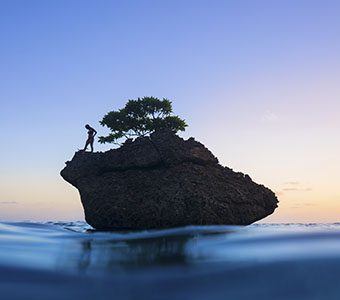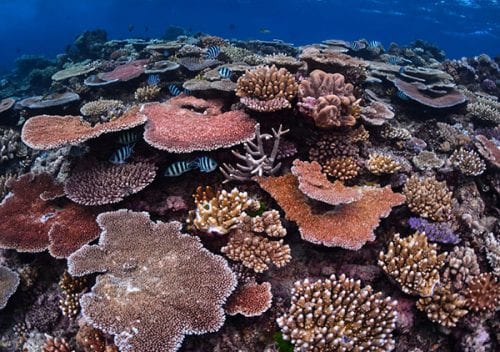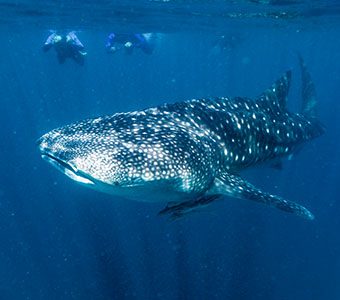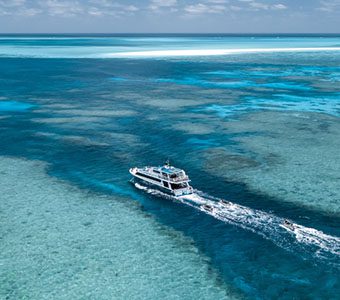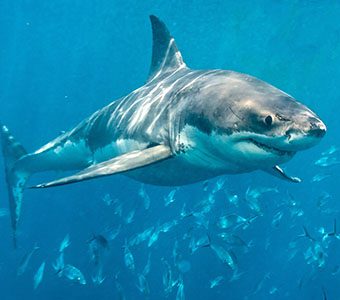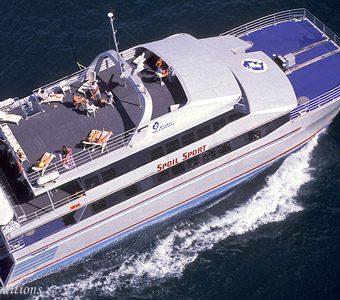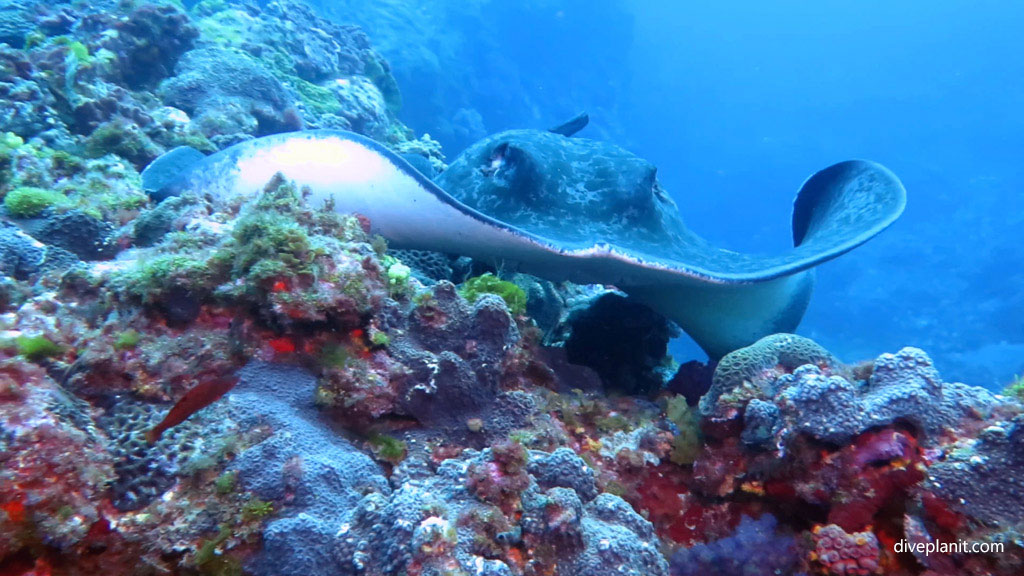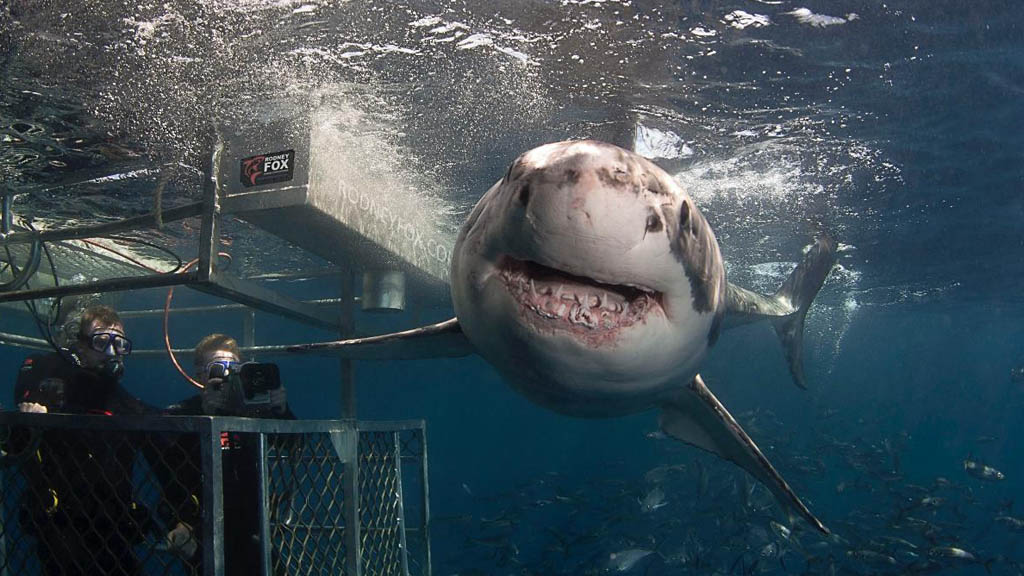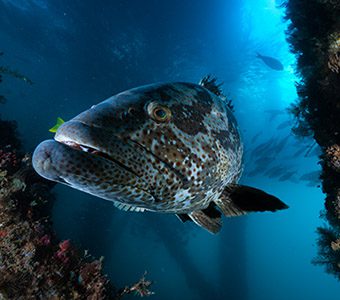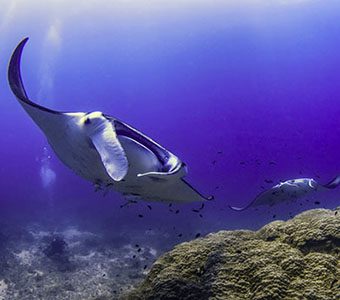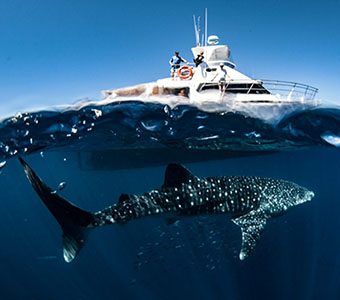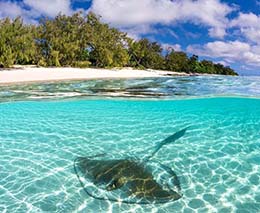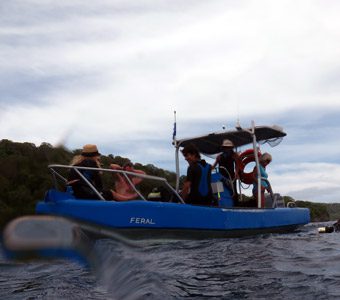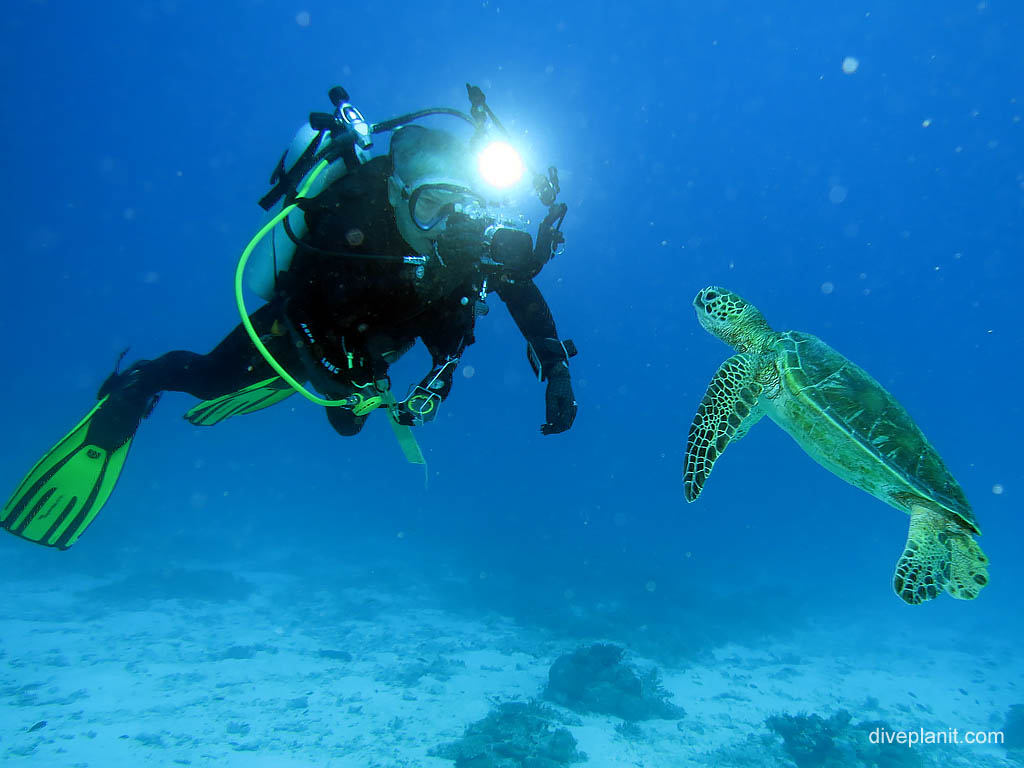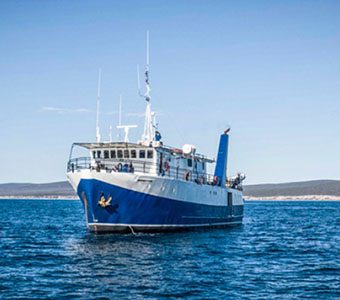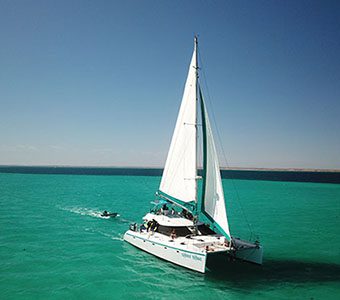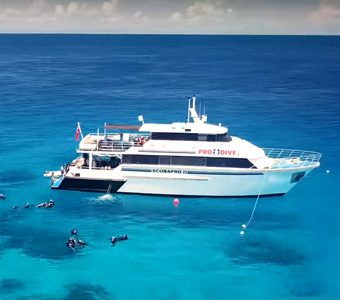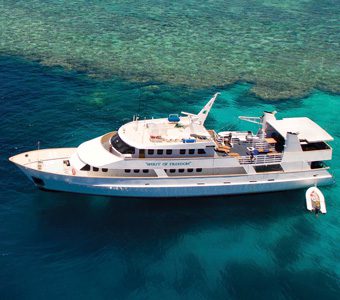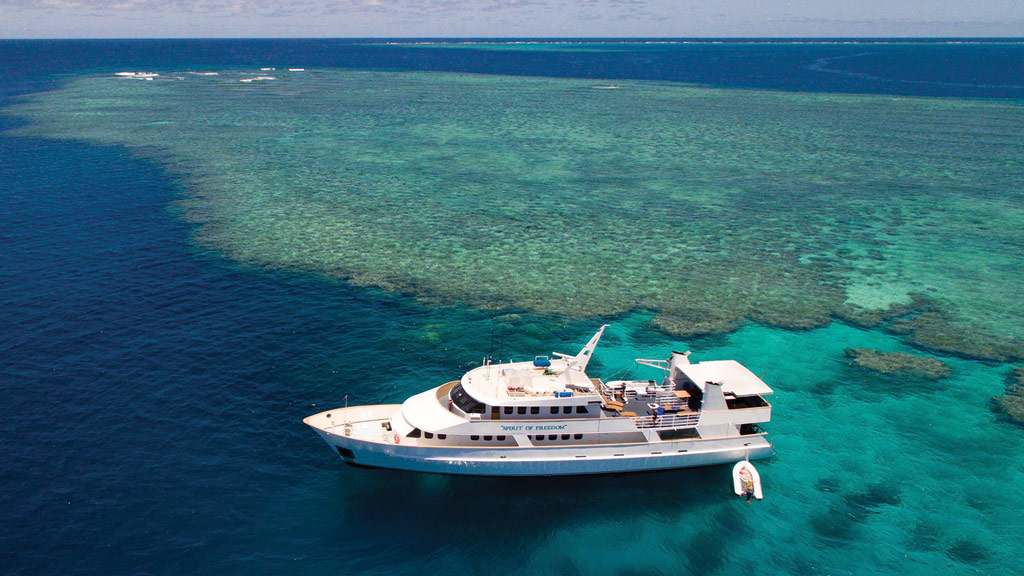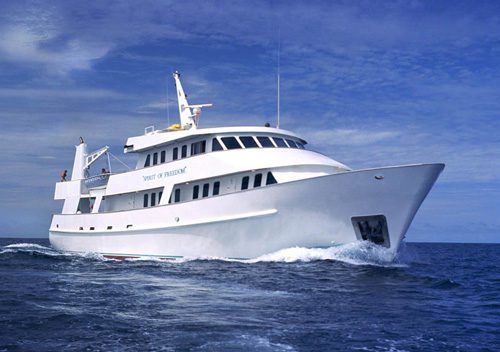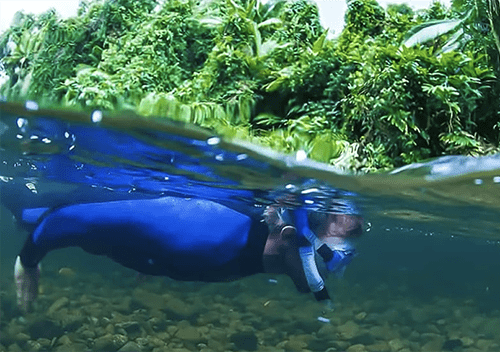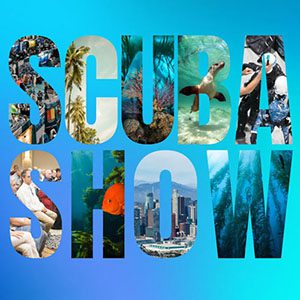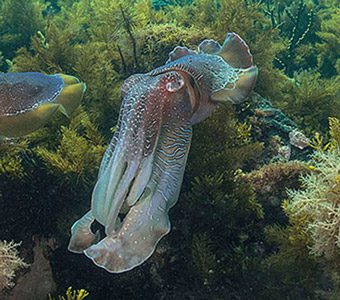Diving in Australia is incredibly diverse, from the stunning coral vistas of the Great Barrier Reef, Ningaloo and Rowley Shoals, to world-famous wrecks like the Yongala, and encounters with whale sharks, manta rays – you can even come face to face with great white sharks.
Most people immediately think of the Great Barrier Reef when thinking of scuba diving in Australia. But, being a continent, there’s more to diving in Australia than one reef (even if it is the size of Italy).

Australia has tropical diving in the east along the Great Barrier Reef and in the west along Ningaloo Reef, the Rowley Shoals and Christmas Island. It also has temperate diving in the south, characterised by kelp rather than coral landscapes, but often teeming with marine life from leafy seadragons and cuttlefish, to rays, seals and great white sharks.
Here we’ll share with you what we consider to be the best liveaboards in Australia, Australia’s very special islands, and the best dive holiday destinations in Australia.
What to see when
Australia is a vast continent crossing several different climate zones, and your diving expectations will depend on the weather as well as seasonal marine life migration. In tropical climes, generally the best time to dive for the best visibility is the dry season (May to November) and in temperate climes, in autumn (February to May).
Great Barrier Reef, Queensland
Northern Great Barrier Reef. Diving the reef from Cairns or Port Douglas is available all year round, but the calmer seas and clearer water are from August to January, with the rainiest months of the year usually February and March. Dwarf minke whale season is in June and July, and turtle nesting season is November to February.
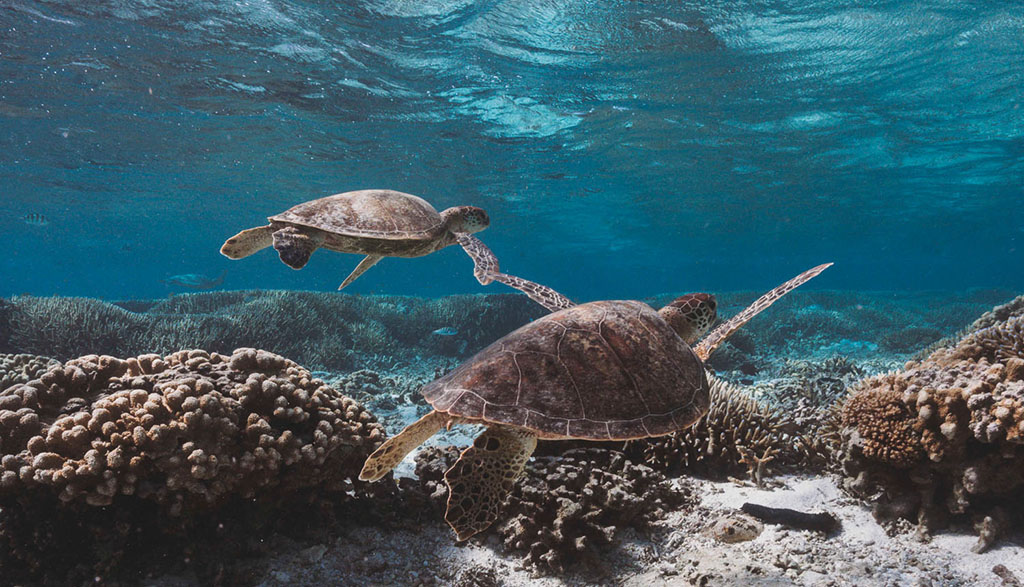
Southern Great Barrier Reef. Peak season on the Southern Great Barrier Reef is over the Australian summer months during turtle nesting season, however the best visibility, and best time to see mantas at Lady Elliot Island and Lady Musgrave Island is mid-winter in July and August. Humpbacks can be seen between August and October.
Lord Howe Island, NSW
For warmer water the best time to dive Sydney, the New South Wales Coast and Lord Howe Island is between January and May, with the visibility increasingly better into June. Suitably dressed, (like the locals), you can dive NSW all year round.
Western Australia
On Ningaloo Reef, whale shark season runs between mid-March and mid-July and humpback season is between July and October. On Christmas Island and Cocos Keeling Islands, the best visibility is between May and November, and whale shark season on Christmas Island is November to April. Rowley Shoals can only be dived in September and October.
South Australia.
While it is possibly to see great whites at Port Lincoln all year, historically the best time of year for viewing white sharks is from April through to June. The giant cuttlefish aggregation in Whyalla is from May to mid-July.
Getting There
Getting there
Being an island continent, Australia is well connected into the global airline routes. Arrive in Perth for Ningaloo, Rowley Shoals, and Australia’s Indian Ocean Islands: Christmas Island and Cocos Keeling Island; Sydney for Lord Howe Island, and Brisbane for all destinations on the Great Barrier Reef.
Getting around
Australia has several domestic airlines servicing major and regional hubs including Qantas, Qantaslink, Jetstar, Virgin Australia and Rex. Train, coach and bus travel in Australia is comfortable, efficient and reasonably priced. All of Australia’s major cities have reliable public transport options however if you want to explore further afield it’s useful to hire a car. More information including travel times can be found here.
All of Australia’s dive ‘resorts’ are on islands dotted around Australia’s coast – and each one is completely different. (They are not all strictly resorts either).
To the west, far out in the tropical Indian Ocean are the sandy Cocos Keeling Islands – consisting of two atolls and 27 coral islands, looking just like a lost paradise.
North of Cocos is Christmas Island – the tip of an extinct volcano – whose near-vertical sides slope down to the seabed 3000 m below. A magnet for pelagics from whale sharks to mantas, and well and home to a plethora of colourful reef fish on its fringing reefs.
To the far east, is Lord Howe Island, sitting on the confluence of 5 ocean currents, it has both tropical and temperate species in abundance, and well as a variety of interesting underwater terrain from a lagoon, to small islands, to the Arches, to Ball’s Pyramid – a monolithic slab of rock that sticks out of the ocean over 500m high!
In the middle of the Great Barrier Reef is Townsville, with Adrenalin Dive offering day trips and 3 to 5 night liveaboard trips to the local colourful reefs and the famous Yongala Wreck.
On the southern end of the Great Barrier Reef are two coral cays offering both excellent colourful coral reef diving, plus, being on the very edge of the reef, encounters with passing pelagics from Mantas to whales (in season). Being surrounded by sand, both Lady Elliot Island and Heron Island are also nesting grounds for turtles – meaning it would be a rare dive if you didn’t have an encounter with a turtle. Lady Musgrave Island now has a pontoon moored close by – so that you can do multiple nights stays and pack in 4 dives per day on the surrounding reefs.
In the west of Australia is Ningaloo – most famous for the whale shark swim – but there are also excellent dive sites on Ningaloo Reef, on the nearby Murion Island, and famously under the Navy Pier. All of which can be dived with Ningaloo Dive and Exmouth Dive.
The most popular liveaboards in Australia are those, like Mike Ball Expedition’s Spoilsport out of Cairns, and the Spirit of Freedom, that visits the Coral Sea – servicing the area of the northern Great Barrier Reef. Offering various packages from regular 3 and 4-day trips which can be taken back to back as a luxurious 7-night trip that includes all the best sites.
There are other liveaboards in the Great Barrier Reef area which visit the Ribbon Reefs – those easily accessible reefs north of Cairns. An excellent example of these are Pro Dive’s three Scubapro liveaboard boats.
Finally, for those with only a few days to spare, you can still spend a few nights out on the Great Barrier Reef on the Divers Den Oceanquest Liveaboard. Moving between different moorings on the Outer Reef it is serviced daily by the day boat Seaquest – so you can spend as many or as few days diving as you like. Another liveaboard offering shorter trips to the central Great Barrier Reef from Townsville is the SeaEsta Liveaboard based in Townsville.
If you plan to visit Australia for diving around October or November, a fantastic but little known alternative would be a trip to the Rowley Shoals – a chain of three spectacular pristine coral atolls – each covering 80 square kilometres and rising up to 400 meters (130 ft) from the ocean floor on the very edge of the widest continental shelf in the world. Comparable to the Coral Sea on the East coast, the stronger prevailing currents make this a unique underwater environment.
Here you dive amongst the giant clams, shellfish, Giant Potato Cod and Maori Wrasse. Discover over 200 species of coral and over 650 species of fish. As the Rowley Shoals is about 100 miles offshore visibility is often in excess of 60m (200 ft).
Two liveaboards – the MV Great Escape and The Odyssey – offer 7-night itineraries in season from Broome in Western Australia, but be aware you may need to book in advance for the next season.
Also on the west coast, out of Ningaloo, is the Sail Ningaloo liveaboard, offering trips of different lengths and taking combinations of divers and snorkelers, or divers only.
And finally – for something completely different, you might like to get face to face with a Great White Shark. Rodney Fox Expeditions offers 3 and 4-night itineraries to the Neptune Islands from Port Lincoln in South Australia. On these trips, you can spend time in either the surface or ocean floor shark cages and experience these magnificent apex predators up close.
Climate
Due to the huge size of the country, Australia has several different climate zones. The northern section of Australia, including WA’s Coral Coast and Queensland, has a more tropical influenced climate, hot and humid in the summer, and quite warm and dry in the winter, while the southern parts, New South Wales, Victoria and South Australia, are cooler with mild summers and cool winters. In summer (December-February), average maximum temperatures are around 26°C/79°F It can also be humid at this time with an average humidity of 65 per cent.
Health
Australia’s public health care system is called Medicare, and Australian hospitals provide world-class medical facilities and standards of care. The Australian Government has Reciprocal Health Care Agreements with a number of countries, which entitle travellers to some subsidised health services. It’s best to check your eligibility before you leave home, and it’s always important to have appropriate travel insurance to cover your stay in Australia. More information.
Where is the nearest decompression chamber? Check the Database link on this site.
Power sockets
Power sockets are Type 1 – three flat pins in a triangle.
Banks and Banking
Australia’s national currency is Australian dollars (AUD), which comes in denominations of $5, $10, $20, $50 and $100 notes. Coins come in 5, 10, 20 and 50 cent and one and two dollar denominations.
Currency exchange is available at banks, hotels and international airports. Australian banks offer the same range of services typical in other western nations, and ATMs are widespread. EFTPOS is widely available in most Australian shops, restaurants and hotels. Fees may be charged on transactions, particularly if withdrawing from an international account, so it is advised you check with your bank before travelling. More information.
Telecoms
The outgoing IDD (international direct dialling) code from within Australia is 0011.
Mobile phone network coverage is available across Australia, however coverage may be limited in some remote areas. Internet access and free WiFi is widely available at internet cafés, resorts and libraries.
Visa & Customs
Unless you are an Australian or New Zealand citizen, you will need a valid Australian visa to enter the country. New Zealand passport holders can apply for a visa upon arrival in the country. All other passport holders must apply for a visa before leaving home. You can apply for a range of visas, including tourist visas and working holiday visas, at your nearest Australian Embassy or Consulate. You can also apply for certain types of visas on the Australian Department of Home Affairs website. More information.
Other Activities
Visit the Tourism Australia website for a wealth of information about travelling to Australia and the many attractions and activities to experience, from climbing Sydney Harbour Bridge to exploring the World Heritage-listed Daintree Rainforest or iconic natural features such as Uluru Kata Tjutu National Park.
Check out a selection of the best diving deals on offer!

